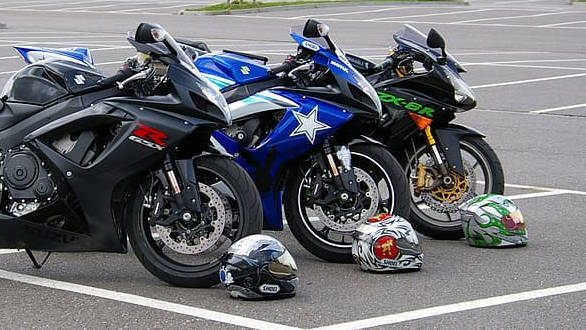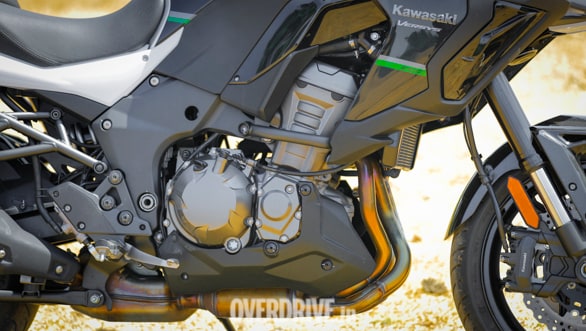Buying a used big bike in India: 10 things that you should look for
You have finally made up your mind about getting yourself a higher displacement motorcycle a.k.a big bike. Instead of shelling out a substantial amount for a brand new motorcycle, you have decided to get a used one. This could be to avoid the higher premium price for your choice of motorcycle. There are a lot of factors that one must consider before signing on the dotted line, to ensure you get the best deal and also a hassle-free ownership experience. Here are the top 10 things to look for while getting a premium big bike in India.

You are out in the market searching for a particular model. You will get leads from friends, individuals and dealers of used motorcycles. In this search, you will come across a particular motorcycle that might appear to be the one. However, don't get impulsive and finalise it. Look for more options in the market, by researching about it online. And only after sampling a minimum of three to four models, you can pick the best of the lot. This will not only give you more options of the same model to choose from, but also a chance to get the most lucrative deal. Further, transactions should not be done in cash but preferably through cheque or online transfer to have proof of sale between the buyer and the seller.
2) Documents CheckNow that you have found the motorcycle, ask the owner or the dealer for all its relevant documents. These will include the necessary engine, chassis and registration numbers mentioned on them. Verify the same by checking on the motorcycle. In case you aren't aware of it, Google can be helpful. The documents should mention the year the motorcycle was bought and also the name of the owner(s), which will be on the original registration certificate (RC), road tax certificate, insurance documents and also on the PUC certificate. One has to also procure the sales certificate from the seller as a proof of purchase with signature of both the parties, in addition to the Transfer Deed that mentions of the transfer of ownership from the seller to the buyer. This should also have ID proof and address details of the buyer and the seller, signed and with a revenue stamp on it. And lastly, the NOC, Form 29 and Form 30 that mention and confirm the transfer between the two parties have to be submitted to the RTO.

3) Start it cold
The first thing that you should check while inspecting the motorcycle is whether the engine is warm or not. Insist the owner to start the motorcycle in front of you, to check for issues when the engine starts cold.  Also, as the engine is revving at idle, you can check for redundant noises due to the timing chain or the tappet. At the same time, check if the exhaust is emitting any smoke, which could be a sign of an engine problem. Here you can also find the condition of the starter motor. If the motor takes too much effort in cranking the engine, it could mean that the motor needs to be replaced. A closer attention to the exhaust note will reveal if there is inconsistency in the firing order.
4) Oil is well?There is a small sight glass on the lower part of the engine that shows the oil level. Firstly, it has to be between the lowest and the highest markings. Secondly, the colour of the oil can tell you if it has been changed recently, it is close to transparent or the owner has not bothered changing it, giving it a black colour. In the latter case, you have to check with the owner as to when the engine oil was changed last.
5) Check for the corners
The motorcycle in front of you is shining to its glory, with polished panels, seats and even the tyres. But that does not mean that the motorcycle has been maintained properly. Often sellers clean and polish the surfaces that are exposed and easy to view, to sell their motorcycle. Make sure you check the hard to access areas as these are the regions which accumulate dirt with time, also resulting in permanent damage of paint or the surface. Also, the frame of the motorcycle needs to be checked thoroughly for any damage or cracks from an accident.
A proper check of the tyre condition will reveal its wear pattern. If the previous owner was an over-enthusiastic one, doing burnouts or was always throttle happy by going flat out, the central rib of the tyre will show severe wear. This will also tell you the type of riding that the motorcycle has been through giving you a proper idea of the engine's condition. Get the motorcycle on the central stand and then spin the wheels. If they are offset, there could be a wheel alignment issue.
7) Suspension and chain check
The easiest and the most important thing while checking the suspension is to see if there is any film of oil on the forks or near the seal, that indicates a leakage. Even if there is, replacing the fork seals is not an expensive affair. Check the condition of the nut on the top of the monoshock. If it is damaged, chances are that the owner has tried to get it fixed at an unauthorised place. Secondly, sit on the bike and compress the front and the rear, it should come back to the original position without any squeaky noise. This can tell if the set-up had bottomed out in a pothole or while being ridden off-road. Also, there should not be any rust or damage on the spring or the tubes of the forks. The chain tension, that can be checked by pulling it away from the rear sprocket, should be right and not too loose, as it could mean a replacement is due shortly. Further, the condition of the chain should tell you if the owner had maintained it properly.
8) Electrical check
The motorcycle that you have chosen has auxiliary lights and other accessories. If they have not been provided by the manufacturer, chances are that they have been retrofitted at an aftermarket place. Check for the condition of the wiring and that it has not damaged the terminals of the battery. Also, if the whole set-up is insulated properly. The swiftness with which the engine is started and also the functioning of the lights and other functions of the motorcycle will tell you if there is any juice left in the battery. The best thing to do is to replace the battery when you get a used motorcycle.
9) Service historyWith the help of the registration number, you can run a check on the service records with the authorised dealership. There can be a possibility that the owner has not serviced the motorcycle at the company dealership, which is fine, provided it has been done it at a reputed place and has records to prove the same. Even if the motorcycle has clocked a higher mileage but has its service records in place, it could still be in consideration. It is also advisable to compare the mileage and the years of ownership and verify that the former has not been tampered with.
10) Test ride
If everything appears and reads fine, a test ride should help you finalise the decision. Insist on taking a longer test ride instead of just taking it for a spin in the building compound. This will help you find out anything that the owner is trying to hide. This will also give you a better idea of the condition of the motorcycle.